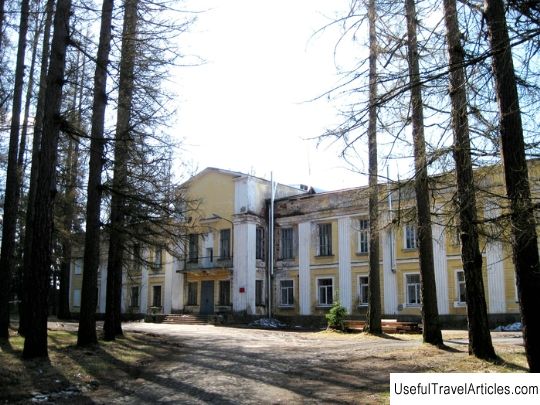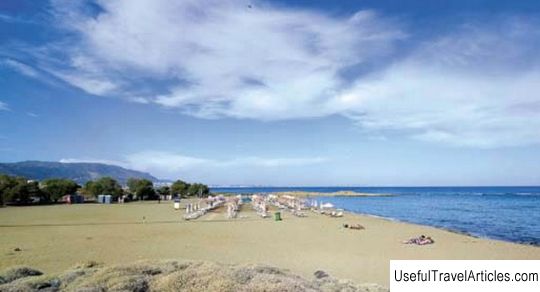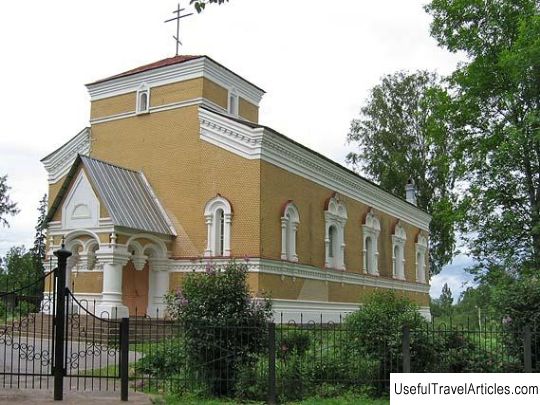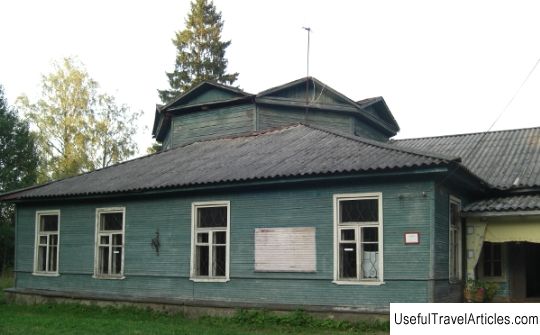The estate of Count Wittgenstein in Druzhnyi description and photo - Russia - Leningrad region: Gatchinsky district
Rating: 8,5/10 (6854 votes) 
The estate of Count Wittgenstein in Druzhnoye description and photo - Russia - Leningrad region: Gatchinsky district. Detailed information about the attraction. Description, photos and a map showing the nearest significant objects. Photo and descriptionNear the Siverskaya station, which is not far from Gatchina, there is the Druzhnoselie estate - the former estate of Count Wittgenstein. At the end of the 18th century, by the grace of Emperor Paul I, two teachers of the Smolny Institute, sisters Karolina and Elizaveta Selbereisen, took possession of several villages in the Rozhdestvenskaya volost, two of which were renamed in their honor: Vygoru - in Elizavetgof, and Rakitnu - to Karolingof. On the border of the villages, the owners built the Druzhnoselie estate. In 1826, the sisters sold two villages near Druzhnoselie to Count P.Kh. Wittgenstein - the hero of the Patriotic War of 1812, who bought them for his son. In 1828, Wittgenstein's son, Leo, married the young princess Stephanie from the ancient Polish family of Radziwill. In one of his poems, A.S. Pushkin called Stephanie "Warsaw beauty". For the newlyweds, a new wooden manor house with a mezzanine was built on the estate. Stone outbuildings were built in the courtyard. A park was set up in the vicinity. At 22, Stefania died of tuberculosis, leaving 2 children and a huge inheritance. Her body was buried in the village of Druzhnoselie. After some time, by order of the widower over the grave of Stephanie, the architect A. Bryullov built the church of St. Stephanids. The building of the temple was erected on a granite foundation made of Pudozh limestone. The church was crowned with a copper dome. The cornice in the second tier had granite columns. Earlier, the cornice was decorated with sculptures, which stood in the niches of the first tier. Inside, the walls were decorated with pink marble. Next to the church according to A. Bryullov, a two-story almshouse was built and a park was laid out. The newly arranged alleys were in harmony and smoothly turned into those that were earlier. The center of the park was an artificial island in the middle of a pond. When Elizabeth Selbereisen died in 1838, the estate of the sisters, including Friendship, was bought by Count Wittgenstein. After the death of his wife, the young count rarely visited here. On the estate there was an economic activity that brought the owner a certain income. For example, a sawmill was built on the estate. The buildings erected at that time were made with "boulder masonry". The history of the main building of the estate is still not known to the end. There is evidence that the earl's house was originally stone, and it later became an almshouse. Other sources claim that since the owners of the estate only lived here in the summer, only the rooms for the servants, who lived in the estate all year round, were stone. If the second version is correct, then the wooden skeleton of the Wittgenstein house, which in the guidebooks is designated as an outbuilding or a steward's house, can be seen even now. The fate of the home museum of the Counts Wittgenstein remained unknown. According to the information that has come down to us, it was located on the second floor and it was possible to get acquainted with the exposition of ancient weapons, uniforms, standards, awards left over from the war of 1812. Perhaps these rarest things were lost without a trace or plundered during the revolution and civil war, or maybe they were transported by the Wittgensteins themselves abroad, or to other estates. True, historians do not deny the possibility that the very fact of the museum's existence in the Druzhnoselie estate is just fiction. In 1910, Count G.F. Wittgenstein donated money to the local rural community for the construction of an elementary school in Lampovo. St. The Stephanids were closed after the October Revolution. The decoration has not been preserved. Local residents said that merchants used the marble tombstones at the church cemetery for cutting meat. During the Great Patriotic War, the church was finally destroyed. In the 30s of the 20th century, a tuberculosis hospital was located in the building of the almshouse, which is located there in our time.       We also recommend reading Church of the Resurrection of Christ in Zhuravlevo description and photo - Russia - Leningrad region: Boksitogorsky district Topic: The estate of Count Wittgenstein in Druzhnyi description and photo - Russia - Leningrad region: Gatchinsky district. |




